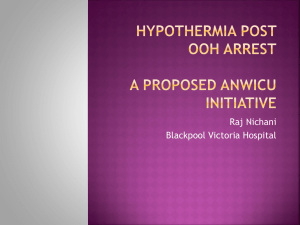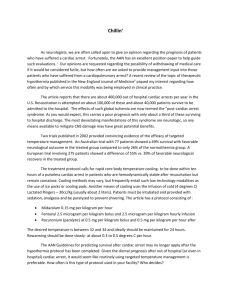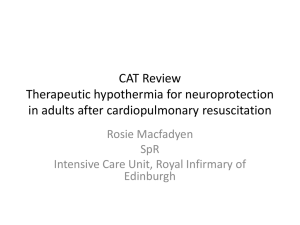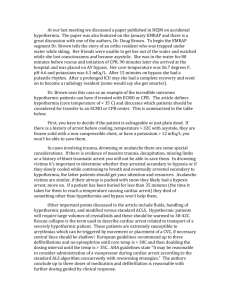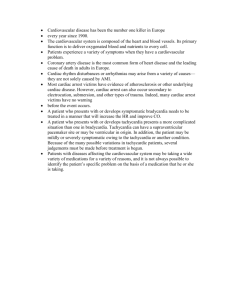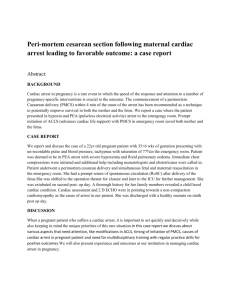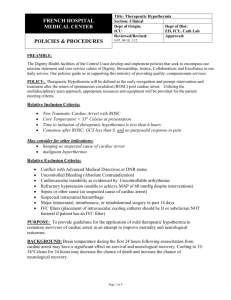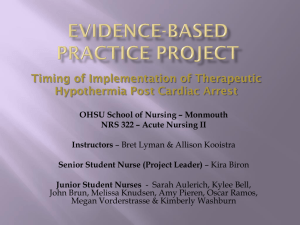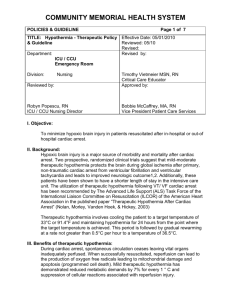Institution of mild “therapeutic” hypothermia (32-34°C - HAL
advertisement
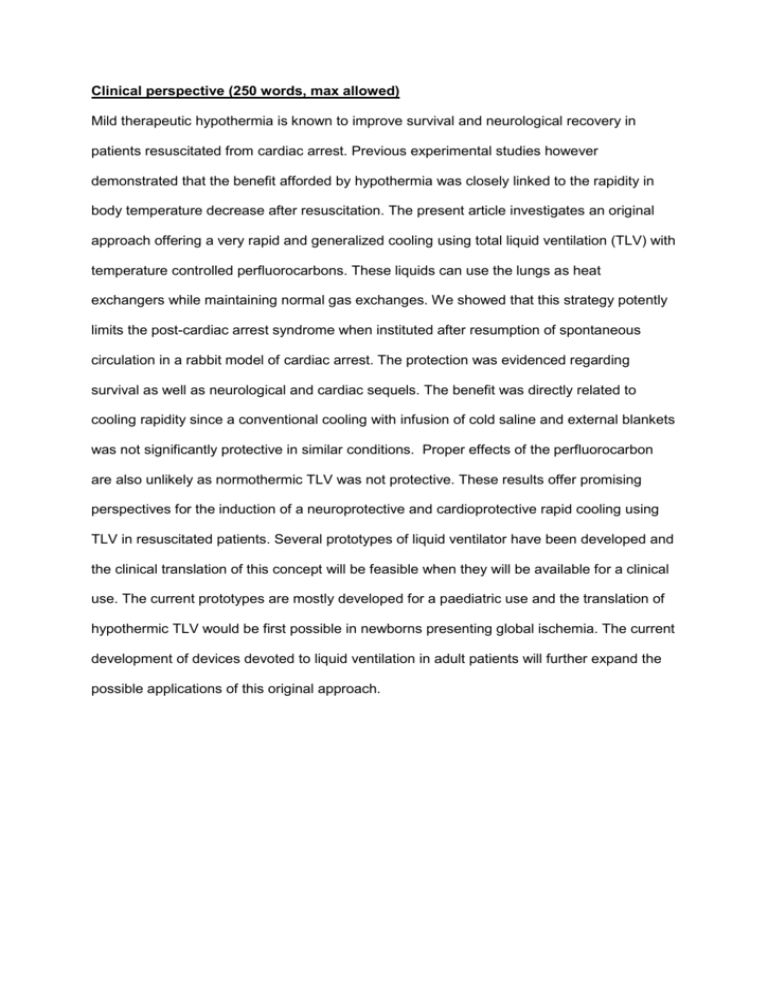
Clinical perspective (250 words, max allowed) Mild therapeutic hypothermia is known to improve survival and neurological recovery in patients resuscitated from cardiac arrest. Previous experimental studies however demonstrated that the benefit afforded by hypothermia was closely linked to the rapidity in body temperature decrease after resuscitation. The present article investigates an original approach offering a very rapid and generalized cooling using total liquid ventilation (TLV) with temperature controlled perfluorocarbons. These liquids can use the lungs as heat exchangers while maintaining normal gas exchanges. We showed that this strategy potently limits the post-cardiac arrest syndrome when instituted after resumption of spontaneous circulation in a rabbit model of cardiac arrest. The protection was evidenced regarding survival as well as neurological and cardiac sequels. The benefit was directly related to cooling rapidity since a conventional cooling with infusion of cold saline and external blankets was not significantly protective in similar conditions. Proper effects of the perfluorocarbon are also unlikely as normothermic TLV was not protective. These results offer promising perspectives for the induction of a neuroprotective and cardioprotective rapid cooling using TLV in resuscitated patients. Several prototypes of liquid ventilator have been developed and the clinical translation of this concept will be feasible when they will be available for a clinical use. The current prototypes are mostly developed for a paediatric use and the translation of hypothermic TLV would be first possible in newborns presenting global ischemia. The current development of devices devoted to liquid ventilation in adult patients will further expand the possible applications of this original approach.
